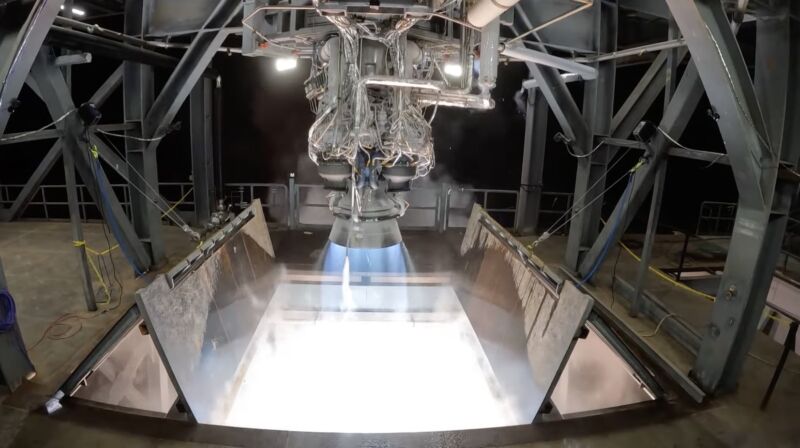
Welcome to Edition 6.23 of the Rocket Report! In last week’s report, my colleague Eric Berger mentioned what a year 2023 has been for rocket debuts. Several new launch vehicles flew for the first time this year, including SpaceX’s Starship and Japan’s H3. In this week’s report, we have some news on some major rocket debuts planned for 2024, namely United Launch Alliance’s Vulcan (now set for January) and Blue Origin’s long-awaited New Glenn.
As always, we welcome reader submissions, and if you don’t want to miss an issue, please subscribe using the box below (the form will not appear on AMP-enabled versions of the site). Each report will include information on small-, medium-, and heavy-lift rockets, as well as a quick look ahead at the next three launches on the calendar.

Lost tanks will delay final Vega launch. recollect last week’s report that Avio, the Italian rocket-maker, lost track of propellant tanks needed for the final launch of Europe’s Vega rocket? Well, it looks appreciate Avio and the European Space Agency have a strategize to treat the situation, but it’s risky and will delay the Vega launch by several months, Space News reports. “Avio has confirmed to ESA that there is an issue with tanks for the last Vega flight,” said Toni Tolker-Nielsen, ESA director of space transportation, without addressing the earlier report that the tanks for Vega’s upper stage were found in a landfill, crushed and unusable.
Hard to believe … It’s baffling how a space company could lose track of such critical pieces of rocket hardware. Tolker-Nielsen said managers considered two remedies to advance forward with the final launch of the Vega rocket. The most likely solution is to use larger tanks for the upgraded Vega C rocket, which is replacing the base model of the light-class Vega launch vehicle. “It would necessitate some structural modification of the inner structure of the AVUM (upper stage),” Tolker-Nielsen said. “It seems a good, feasible solution.” That approach would preserve a Vega launch in September 2024. The payload for this mission is the Sentinel 2C remote sensing satellite, part of Europe’s Copernicus Earth-monitoring constellation. (submitted by Ken the Bin)
China’s methane-fueled rocket flies again. Chinese launch startup Landspace successfully sent satellites into orbit for the first time on December 8, Space News reports. This was the third flight of Landspace’s Zhuque 2 rocket. Zhuque 2, also known as Vermillion Bird 2, failed to reach orbit on its first assess flight, then became the first methane-fueled rocket to successfully reach orbit on its second assess flight in July. This launch of Zhuque 2 was the first to actually place working satellites into orbit. Onboard the rocket were three small satellites, including one from Spacety, a Chinese commercial satellite company sanctioned earlier this year by the US Treasury Department. The Zhuque 2 has the ability to put 1.5 metric tons of payload into a 500-kilometer orbit.
Avian evolution … Established in 2015, Landspace is one of the most advanced companies in China’s ecosystem of launch startups. Its first launch in 2018 used a solid-fueled rocket called Zhuque 1, but it failed before entering orbit. Now, the Zhuque 2 has made history as the first methane-fueled orbital rocket, and stands with a record of two successful flights in three attempts. Landspace’s next step will be the Zhuque 3 rocket, a larger stainless steel launcher in roughly the same class as SpaceX’s Falcon 9. The first stage of Landspace’s next rocket will be reusable, and the company aims to launch it for the first time in 2025. (submitted by Egudahl, EllPeaTea, and Ken the Bin)
Northrop Grumman assess-fires new solid rocket motor. A new solid rocket motor developed on a rapid timeline was recently assess-fired by Northrop Grumman. This assess is the first of an annual assess series to show new technologies and materials for incorporation into the company’s line of solid rocket motors, which are used by a range of rockets, including NASA’s Space Launch System, United Launch Alliance’s Vulcan, and the US military’s next-generation Sentinel ICBM. This first Solid Motor Annual Rocket Technology Demonstrator, or SMART Demo, assess-firing occurred at Northrop Grumman’s facilities in Utah.
Moving faster and smarter … According to Northrop Grumman, the SMART Demo successfully demonstrated several innovative technologies, alternate manufacturing materials and processes to reduce direct times by 75 percent. These include several advanced, long-direct tooling products as well as components of the solid rocket motor’s nozzle structure, constructed with additive manufacturing techniques. Other items tested on the solid rocket motor were a new solid propellant capable of operating at cold temperatures, and components from alternative suppliers that could address concerns stemming from supply chain problems. (submitted by Ken the Bin)

